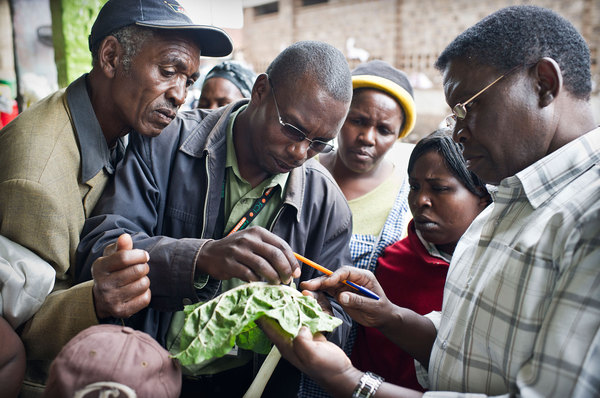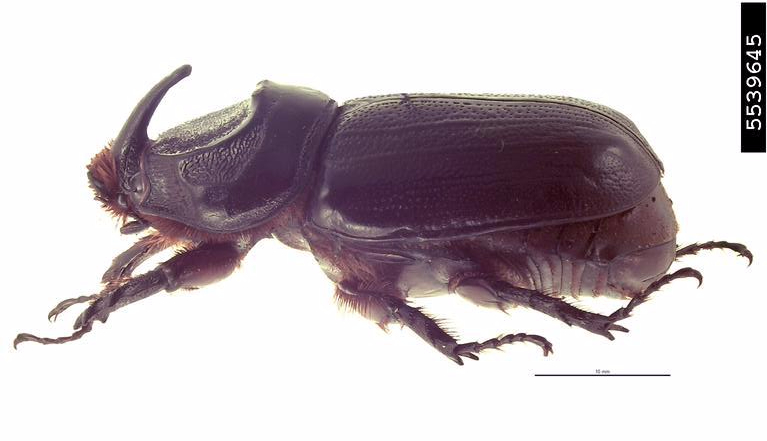Update: New Pest & Disease Records (15 Dec 17)
We’ve selected a few of the latest new geographic, host and species records for plant pests and diseases from CAB Abstracts. Records this fortnight include a first report of snow mould (Typhula cf. subvariabilis) in Antarctica, the first report of Drosophila suzukii and the black locust gall midge (Obolodiplosis robiniae) in Poland.
E-plant clinics launched in Mozambique
E-plant clinics have been successfully launched in Mozambique this November, following two trainings and official launches. The trainings took place in a village called Tenga, Moamba near the capital city of Maputo (around 80 km), and in Morrumbene District near the city of Inhambane. Training was delivered in partnership with the National Directorate of Agricultural…
The disease that could change how we drink coffee
Reblogged from BBC Future Written by Jose Luis Penarredonda If you landed in Bogota in the 1960s, one of the first things you would have probably seen outside the airport was a giant billboard. In a slightly menacing tone, it said: “Coffee rust is the enemy. Don’t bring plant materials from abroad”. It was one…
Más que un microscopio: El laboratorio de plantas en Comarapa, Bolivia
Ladiplantas (Laboratorio de Plantas) que se ubica en el pueblo agrícola de Comarapa, en los cálidos valles andinos de Bolivia, está bien integrado a la comunidad local. Ladiplantas es manejado por la Ing. Olivia Antezana, como parte del Centro de Investigación Agrícola Tropical (CIAT), de la Gobernación del Departamento de Santa Cruz, desde el 2000…
Diagnostics in action: A proactive plant laboratory in Comarapa, Bolivia
Ladiplantas (Plant Laboratory) in the agro-town of Comarapa, in Bolivia’s low Andean Valleys, is well integrated into the farming community. Ladiplantas is run by agronomist Olivia Antezana, as part of CIAT (Research Centre for Tropical Agriculture), of the Departmental government of Santa Cruz, since 2000 (Bentley and Boa 2004). CIAT is one of the three…
Coconut Rhinoceros Beetle on Guam – an update
An adult male coconut rhinoceros beetle. Emmy Engasser, Hawaiian Scarab ID, USDA APHIS ITP, Bugwood.org 10 years ago the Coconut Rhinoceros beetle (CRB) was first discovered on the western Pacific island of Guam. Since then, these shoe-shine black, miniature invaders have spread to all parts of the island and are laying waste to the local coconut…
INIA y Plantwise desarrollan entrenamiento en uso seguro de plaguicidas
La agricultura en el Perú se ha expandido rápidamente desde el 2000. Según el Instituto Nacional de Estadística e Informatica del Perú, el Producto Bruto Interno agrícola se ha más que duplicado entre 2000-2016. Este crecimiento estuvo relacionado a la ocupación de nuevas áreas agrícolas, pero…
Side event on fall armyworm at AGRF 2017 [livestream]
In 2016 the fall armyworm, a major pest in the Americas, was found in Africa for the first time. Since then it has rapidly spread across much of sub-Saharan Africa. The caterpillar feeds on more than 80 different plants, but maize is its preferred host, the most widely grown crop in Africa and a staple…
Update: New Pest & Disease Records (24 Aug 17)
We’ve selected a few of the latest new geographic, host and species records for plant pests and diseases from CAB Abstracts. Records this fortnight include a first report of Citrus leaf blotch virus in lemon in China, first report of Groundnut bud necrosis virus infecting periwinkle (Catharanthus roseus) in India and the first report of Colletotrichum…
CABI scientists shed light on factors affecting the use of biological control
Human health issues arising from the use of synthetic pesticides and concerns about their environmental toxicity are making lower-risk alternatives increasingly attractive. Biological control agents are living organisms which reduce harmful pest populations. Many people know of the common ladybird, whose larvae feed on aphids, but a wide range or biological control agents – e.g.…


